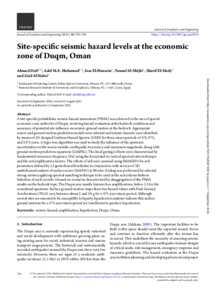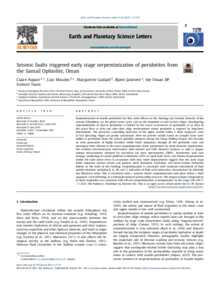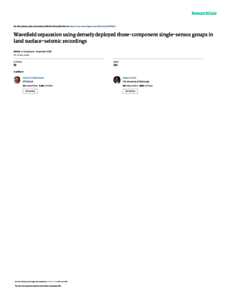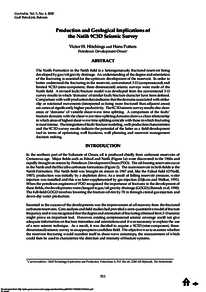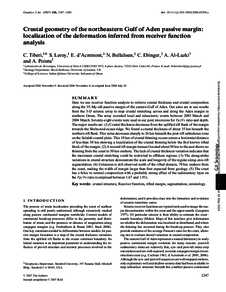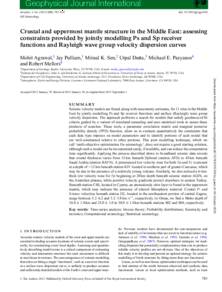وثيقة
Site-specific seismic hazard levels at the economic zone of Duqm, Oman.
المعرف
DOI: 10.1093/jge/gxab050
المصدر
Journal of Geophysics and Engineering. v. 18, 5, p. 740-760
المساهمون
Mohamed, Adel M. E., مؤلف
El-Hussain, Issa., مؤلف
Al-Shijbi, Yousuf., مؤلف
El-Hady, Sherif., مختصر
Al-Habsi, Zaid., مؤلف
الدولة
United Kingdom.
مكان النشر
Oxford
الناشر
Oxford University Press.
ميلادي
2021-10-01
اللغة
الأنجليزية
الموضوع
الملخص الإنجليزي
A site-specific probabilistic seismic hazard assessment (PSHA) was achieved in the area of special economic zone authority of Duqm, involving hazard evaluation at the bedrock conditions and assurance of potential site influence on seismic ground motion at the bedrock. Appropriate source and ground-motion prediction models were selected and seismic hazards were identified by means of 5% damped Uniform Hazard Spectra (UHS) for three return periods of 475, 975, and 2475 years. A logic-tree algorithm was used to study the influence of the epistemic uncertainties on the source models, earthquake recurrency and maximum magnitude, along with ground-motion prediction equations (GMPEs). The local geology effects were characterized by fundamental resonance frequency (Fo) using the horizontal-to-vertical spectral ratio technique and the soil amplification factors. The effects of soil were assessed using SHAKE91 for soil parameters defined by 55 geotechnical boreholes in conjunction with surveys of 2D multichannel analysis of surface waves (MASW) at 90 sites. Scaling was performed for selected strong-motion applying spectral matching technique to be used at the soil column bottom. Selection of such records is based on scenarios characterized by deaggregation of the PSHA results on the bedrock tops. The Duqm area mostly features low amplifications, below 1.3 for the considered spectrum. Surface ground-motion maps show low hazard values with Peak Ground Accelerations (PGA) vary between about 2 and 5% g for a 475-year return period. Although several sites are assessed to be susceptible to liquefy, liquefaction analyses indicate that surface ground motions for a 475-year return period are insufficient to produce liquefaction.
ISSN
1742-2132
قالب العنصر
مقالات الدوريات

